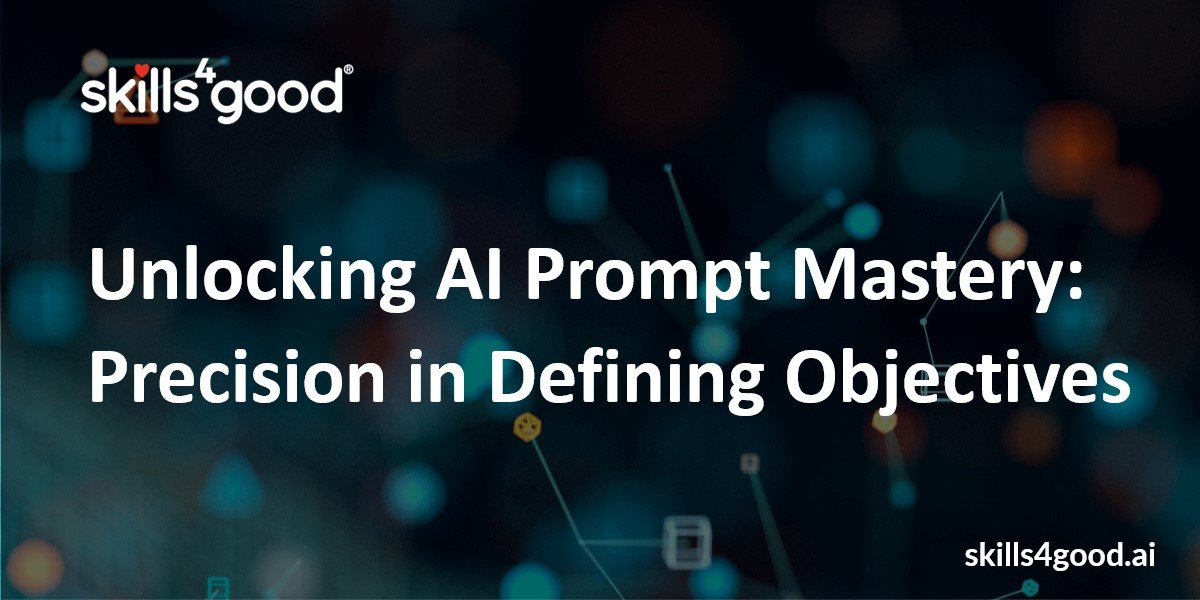In the rapidly evolving landscape of artificial intelligence (AI), the capacity to effectively communicate with AI technologies is becoming a cornerstone skill for professionals in every industry.
This blog delves into a crucial strategy from Generative AI: prompt engineering. At its core, we focus on the foundational step of Defining Your Objective. This strategy is not just about instructing AI. It’s about unlocking its potential to serve your specific needs efficiently.
What’s the Prompt Strategy
At the heart of prompt engineering lies the strategy of defining your objective. This critical first step is knowing precisely what you want to achieve with AI. Whether you’re after creative inspiration, specific information, or a particular type of analysis, setting a clear goal is paramount. It informs how you should frame your requests and directs the AI to generate relevant and valuable outputs.
Why It Matters
The answer is focus. Without a clear target, AI might deliver outputs that are either too broad or misaligned with your needs, leading to inefficiency and frustration. By articulating your goal clearly, you ensure that AI’s vast capabilities are channeled toward generating outputs directly relevant to your context and objectives.
How To Craft a Precise Prompt
Let’s draw on insights from the Harvard Business Review by adopting a structured approach to your prompts. Let’s explore four types of prompts that can significantly enhance the usefulness of AI in your professional tasks.
1. Query Prompts
This type of prompt is your go-to when you need to unearth specific information or insights from a sea of data. They’re like laser-focused questions aimed at extracting nuggets of wisdom from AI. When crafting a query prompt, you’re asking AI to dive into its knowledge base and retrieve information directly relevant to your query.
For example: “Assess the return on investment (ROI) for implementing AI chatbots in customer service for retail businesses over the past year.”
2. Clarification Prompts
This type of prompt digs deeper into the nuances of a topic, revealing layers and complexities that a surface-level inquiry might miss. They’re effective when seeking to understand a subject’s intricacies or underlying mechanisms. Think of them as inviting AI to peel back the layers of an onion, offering a more nuanced view of the topic at hand.
For example: “Detail the process and challenges of integrating blockchain technology for enhancing data security in financial transactions.”
3. Comparison Prompts
This type of prompt is your analytical tool for weighing options, perspectives, or models against each other. It sets the stage for AI to evaluate the strengths and weaknesses of different approaches, offering a balanced view that can aid decision-making. It is invaluable for exploring alternatives and making informed choices.
“Analyze the cost-benefit ratio of remote workspaces versus traditional office spaces in tech startups during the COVID-19 pandemic.”
4. Prediction Prompts
This type of prompt encourages AI to speculate on future developments based on current data and trends. It is forward-looking and can help anticipate changes, prepare for upcoming challenges, or identify new opportunities. It leverages AI’s capacity to analyze patterns and project them into the future.
“Forecast the impact of emerging virtual reality (VR) technologies on real estate marketing strategies in the next five years.”
You guide AI towards generating targeted and insightful outputs by framing your prompts with a clear and precise objective. This approach makes your interactions with AI more efficient and ensures the outputs are directly applicable and finely tuned to your professional needs.
Conclusion
Mastering the art of defining your objective in AI interactions is a powerful skill. It enhances the relevance and quality of AI-generated outputs and aligns these technologies with your strategic goals.
As we continue to navigate the intricacies of AI in the professional world, remember that the clarity of your objectives is the key to unlocking the full potential of generative AI. Let’s embrace this strategy to navigate the AI landscape more effectively, transforming challenges into opportunities for innovation and growth.

